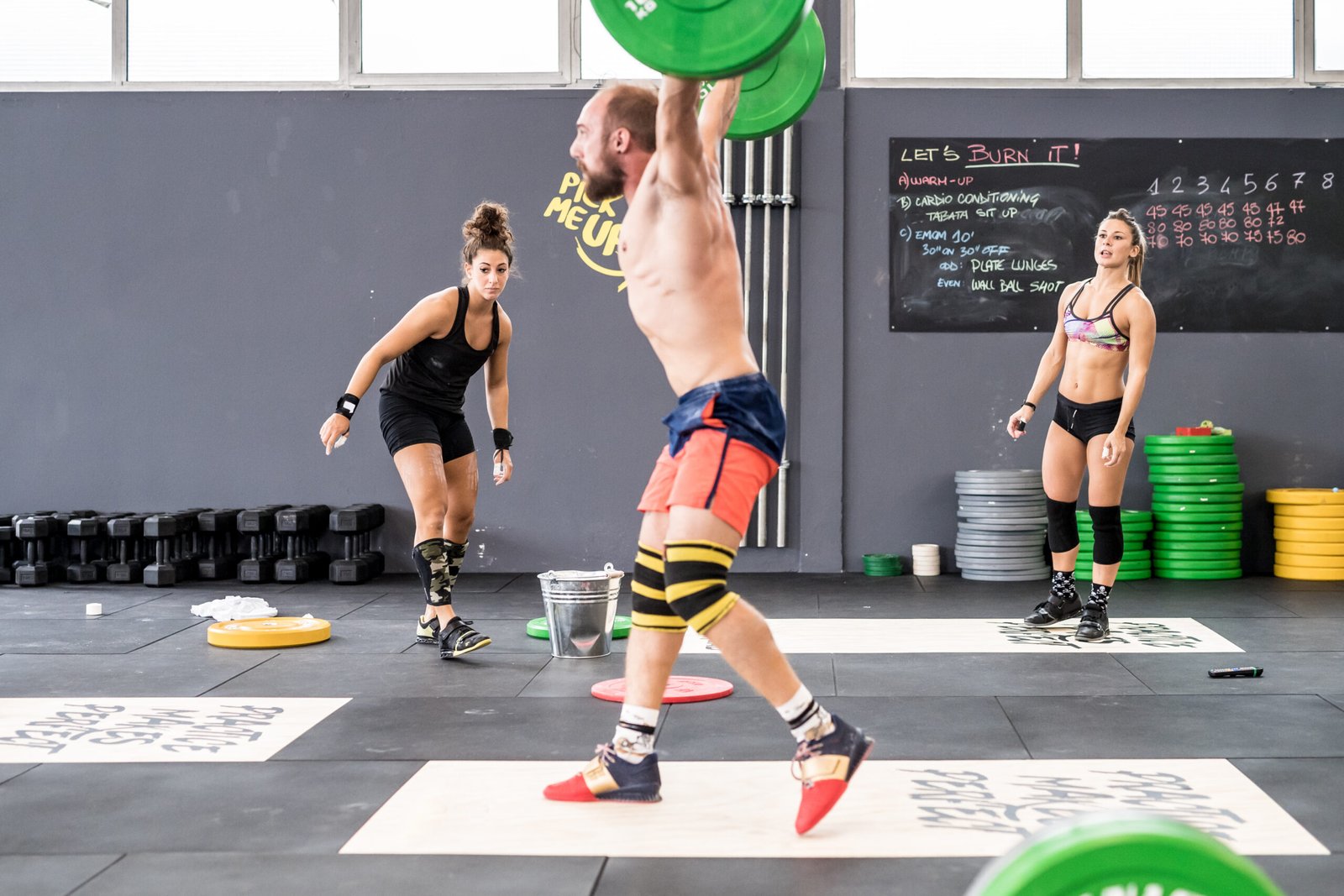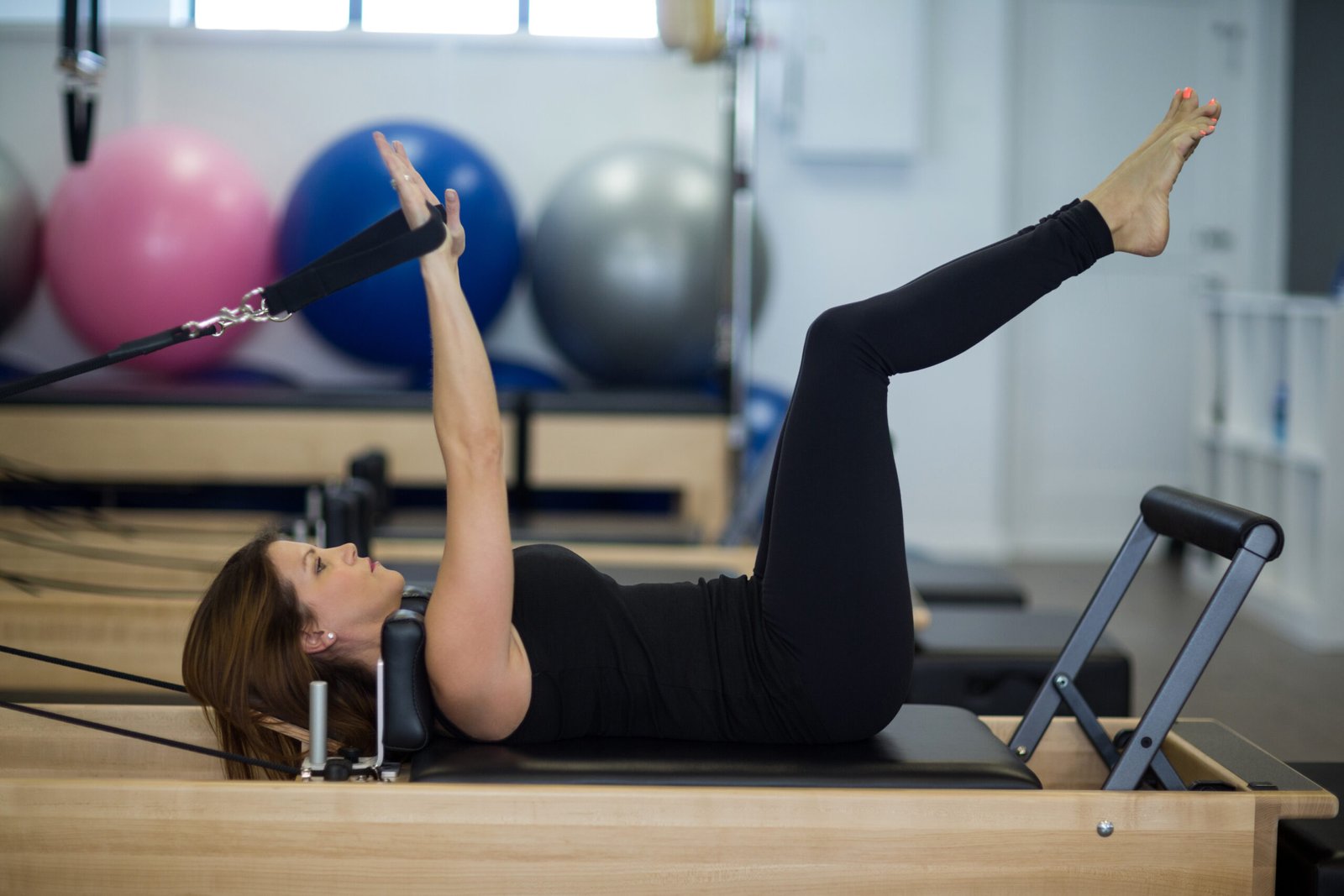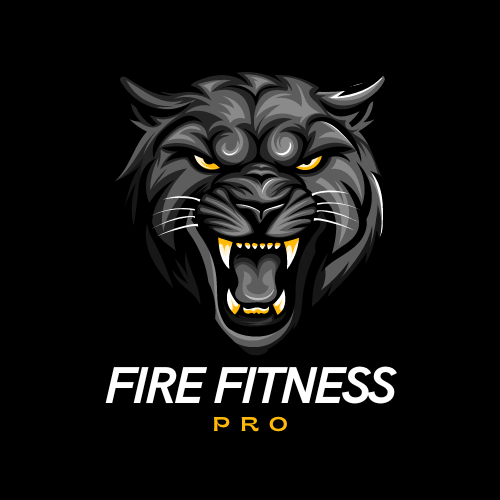Finding time to exercise with a jam-packed schedule can be a daunting task. Thankfully, High-Intensity Interval Training (HIIT) offers an innovative solution with its promise of delivering impressive results in just 20 minutes. In this blog post, titled “Maximize Your Workout Efficiency: HIIT Tips for Busy People to Achieve Incredible Results in Just 20 Minutes!”, we’ll explore how HIIT can fit seamlessly into even the busiest lifestyles. We’ll delve into the fundamental aspects of HIIT, its benefits, and practical tips for maximizing your workouts to achieve outstanding fitness results with minimal time investment.
Here’s the 20-minute workout for busy people with the same results
| Benefit | Description |
|---|---|
| Maximized Results | Even with limited time, HIIT delivers significant improvements in cardiovascular health and endurance. |
| Efficiency | The combination of intensity and rest periods optimizes calorie burn in a short timeframe. |
| Post-Workout Benefits | Increased metabolism post-HIIT means you continue burning calories after your session. |
| Flexibility | HIIT can be adapted for different fitness levels, ensuring a versatile workout for everyone. |
High-Intensity Interval Training (HIIT) is a game-changer for those navigating busy schedules. This efficient workout method, which typically takes just 20 minutes, has been proven to deliver the same potent results as longer exercise sessions. By focusing on short but intense bursts of exercise followed by brief rest periods, HIIT maximizes calorie burn and enhances cardiovascular fitness. This style of training is ideally suited for busy individuals who need to squeeze a full-body workout into limited time slots. Not only does HIIT offer considerable improvements in overall fitness levels, but it also continues to burn calories long after you’ve finished working out, known as the post-exercise oxygen consumption effect.
– Maximized Results: Even with limited time, HIIT delivers significant improvements in cardiovascular health and endurance.
– Efficiency: The combination of intensity and rest periods optimizes calorie burn in a short timeframe.
– Post-Workout Benefits: Increased metabolism post-HIIT means you continue burning calories after your session.
– Flexibility: HIIT can be adapted for different fitness levels, ensuring a versatile workout for everyone.
By incorporating HIIT into your weekly routine, you comfortably fit in a full workout regimen that fosters consistency and efficiency in achieving your fitness goals.
What is HIIT?

At its core, High-Intensity Interval Training (HIIT) is a revolutionary fitness methodology that alternates between intense bursts of exercise and short periods of rest. This workout strategy is designed to push your limits, aiming to achieve maximum output in a condensed period of about 20 minutes. Ideal for individuals with packed schedules, HIIT provides the opportunity to enjoy the comprehensive fitness benefits typically associated with longer workout durations.
– Definition of HIIT: Alternating intense exercise bouts with brief rest or low-intensity phases.
– Time Efficiency: Ideal for tight schedules, offering substantial benefits in 20 minutes.
– Fitness Gains: Improves heart health, burns calories fast, and boosts metabolic rate quickly.
– Post-Exercise Benefits: The afterburn effect increases calorie burn after workout completion.
– Adaptability: Can be tailored to all fitness levels, ensuring engaging and motivating workouts.
Adopting HIIT into your weekly exercise regime can prove transformative, enhancing fitness while respecting time constraints. With its adaptable nature, HIIT fosters a personalized experience that keeps you engaged and motivated.
| Exercise | Targeted Muscle Groups | Benefits | Modifiable Intensity |
|---|---|---|---|
| Squats | Quads, Hamstrings, Glutes, Core | Maximizes calorie burn and boosts lower body strength. | Increase squat depth or add weights. |
| Push-Ups | Chest, Shoulders, Triceps, Core | Builds upper body strength and endurance. | Try incline, decline, or clapping push-ups. |
| Plank | Core, Shoulders, Back, Glutes | Improves core stability, overall body balance, and strength. | Modify by adding leg lifts or side planks. |
1. Squats
Squats are a cornerstone exercise within any effective HIIT routine, targeting multiple muscle groups, including the quads, hamstrings, glutes, and core. These compound movements are integral for efficiently maximizing calorie burn and enhancing lower body strength in a short amount of time. Squats offer high metabolic engagement, which means they’re beneficial in elevating heart rate and boosting metabolism—a crucial aspect of any HIIT program aimed at quick yet substantial results.
– Compound Benefits: Engages quads, glutes, hamstrings, and core in a single movement.
– Enhanced Calorie Burn: Boosts metabolism effectively in brief workout periods.
– Proper Form: Focus on a straight back, knee alignment with toes, and core engagement for safety and effectiveness.
– Modifiable Intensity: Increase squat depth or add weights to amplify intensity based on fitness levels.
– Time Efficiency: Compact and impactful exercise that fits within a busy schedule.
Integrating squats into your routine enriches your HIIT session by ensuring each minute contributes substantially to your fitness journey, despite time limitations.
2. Push-Ups
Push-ups are a remarkably versatile and effective exercise that works perfectly within a HIIT framework to build upper body strength and endurance. They target critical muscle groups such as the chest, shoulders, triceps, and core, offering a comprehensive workout. As part of a 20-minute HIIT routine, push-ups make exercise accessible and efficient for anyone on a tight schedule.
– Primary Muscle Engagement: Focuses on chest, shoulders, and triceps along with core stabilization.
– Versatile Variations: Incorporate decline, incline, or clapping push-ups to diversify muscle engagement.
– No Equipment Needed: Requires only bodyweight, making it perfect for home workouts or tight spaces.
– Proper Technique: Ensure hands shoulder-width apart, maintain a straight body line, and engage the core to prevent injury.
– Efficiency in Time: Short but intense, fitting seamlessly into a quick HIIT schedule.
Push-ups within a HIIT regimen enhance upper body sculpting and improve muscle endurance, essential for a balanced fitness approach, particularly with time constraints.
3. Plank

Plank exercises are a mainstay in any potent HIIT workout due to their ability to engage numerous muscle groups simultaneously. Including planks in your HIIT routine will not only improve core strength but also boost overall body stability and balance. Given their adaptability, planks can be adjusted to suit any fitness level, an excellent addition for those desiring effective workout routines without time to spare.
– Core Engagement: Focuses heavily on abdominal strength and stability.
– Versatile Modifications: Enhance intensity with leg lifts, or transition to side planks for varied muscle activation.
– Benefits of Short Holds: Even brief plank periods, performed consistently, bolster posture and functional strengths.
– No Equipment Needed: Ideal for home HIIT workouts without the need for additional gear.
– Contribution to Flexibility: Excellent option for brief but effective bouts of core-oriented HIIT practices.
Adding planks to your set exercises fortifies your fitness routine, ensuring essential core elements are appropriately challenged within limited time frames.
How to do an effective 20-minute workout?
Crafting a successful 20-minute workout revolves around strategic planning and execution of exercises that engage multiple muscle groups and elevate heart rates efficiently. Prioritizing compound movements is essential for maximizing body engagement and calorie burning within the short period allowed by HIIT. Organizing these exercises into short, intense bursts followed by brief rest periods helps maintain a challenging pace that stimulates cardiovascular and metabolic benefits.
– Compound Focus: Opt for exercises like burpees or lunges that utilize multiple muscles.
– Intense Bursts: Incorporate high-intensity intervals paired with short rest phases for maximum heart rate elevation.
– Advanced Planning: Lay out your workout sequence beforehand to reduce downtime.
– Bodyweight Utilization: Use exercises that require no equipment or opt for portable gear like resistance bands.
– Concentration: Minimize distractions for a seamless and productive workout experience.
Ensuring your 20-minute sessions are packed with efficient movements will lead to a highly effective workout, driving noticeable results even with a challenging schedule.
5 quick and effective workouts for busy schedules
| Workout | Exercises | Duration/Rest | Intensity Level |
|---|---|---|---|
| Workout A | Burpees, Jump Squats, Push-Ups | 45 seconds each, 15 seconds rest between | High |
| Workout B | Plank Holds with Variations, Mountain Climbers, Alternating Lunges | 45 seconds each, 15 seconds rest between | Moderate |
| Workout C | High Knees, Tricep Dips, Bicycle Crunches | 45 seconds each, 15 seconds rest between | High |
| Workout D | Jumping Jacks, Russian Twists, Plank with Knee Tucks | 45 seconds each, 15 seconds rest between | Moderate |
| Workout E | Skater Jumps, Donkey Kicks, Shoulder Taps | 45 seconds each, 15 seconds rest between | High |
Unlock the power of concise workouts with five specially designed HIIT sessions tailored for those who are perpetually on the go. Each workout aims to maximize every moment, ensuring no second is wasted, and fitness goals are achieved with remarkable efficiency. Minimal equipment is needed, making these routines adaptable to any location—from home to hotel room to office space.
– Workout A: Burpees, jump squats, push-ups—alternating for 45 seconds each, with 15 seconds rest in between.
– Workout B: Plank holds with variations, mountain climbers, alternating lunges.
– Workout C: High knees, tricep dips, bicycle crunches, performed in quick succession.
– Workout D: Jumping jacks, Russian twists, plank with knee tucks.
– Workout E: A circuit with skater jumps, donkey kicks, and shoulder taps.
Integrating these succinct workouts into your routine can prove transformative by fitting exercise imperatives directly into high-paced lifestyles without compromising on results.
Can A 20 Minute Workout Be Effective?
| Factor | HIIT | Traditional Workouts |
|---|---|---|
| Workout Duration | Short, typically 20 minutes | Longer sessions, often 45 minutes to 1 hour |
| Caloric Burn | High, due to intense intervals | Moderate, consistent, but slower |
| Heart Rate | Rapidly elevated during short bursts | Steady increase, less intense bursts |
| Metabolism Boost | Increased post-exercise burn (EPOC effect) | Less afterburn post-workout |
| Accessibility | No equipment needed, great for home workouts | Often requires gym equipment or more space |
Indeed, a 20-minute workout, particularly when employing the principles of HIIT, can deliver significant health and fitness benefits. These short workouts leverage brief bursts of intense activity to boost cardiovascular health and metabolism efficiently. The adaptability of HIIT facilitates customized sessions for all fitness levels, ensuring inclusivity and accessibility. Consistency and workout intensity are critical to extracting the most benefit from these shorter sessions, maximizing calorie burn, and fostering muscle growth.
– Cardiovascular Improvement: Quick-paced intervals rapidly enhance heart health.
– Metabolic Boost: Elevated metabolism and continued calorie burn post-exercise.
– Accessible for All: Tailor HIIT duration and intensity to individual fitness levels.
– Engagement and Varied Exercises: Diverse workout structures keep routines stimulating.
– Key to Success: Consistency paired with intensity ensures maximized outcomes.
A strategically planned and executed 20-minute regimen does more than just fit into a busy schedule—it optimizes every moment toward comprehensive fitness improvements.
1. What is HIIT and how can it fit into a busy schedule?

Incorporating HIIT into a busy schedule is easier than you might think. The beauty of High-Intensity Interval Training is its flexibility, allowing you to tailor workouts to fit your unique time constraints and fitness level. For individuals juggling a hectic lifestyle, a 20-minute HIIT session can be seamlessly slotted into a lunch break, early morning routine, or even between meetings. Quick yet effective routines can be performed at home without the need for elaborate equipment, making it ideal for those constantly on the go. By using workouts that combine cardio and strength training exercises, such as burpees, jump squats, and push-ups, you maximize calorie burn and enhance muscle tone in a short period. This efficient workout style not only boosts metabolism but also increases endurance over time, offering tangible fitness benefits without requiring hours at the gym. By integrating HIIT into your daily routine, you can achieve a healthier lifestyle and maintain your fitness goals, making every minute count.
2. Can a 20-minute HIIT workout be as effective as longer workouts?
With busy lifestyles becoming the norm, time-efficient workout options like High-Intensity Interval Training (HIIT) have surged in popularity. But can a 20-minute HIIT workout truly be as effective as its longer counterparts? The resounding answer from fitness experts and research is: yes, it can, under the right conditions.
| Factor | 20-Minute HIIT Workout | Longer Workout (e.g., 45-60 minutes) |
|---|---|---|
| Duration | Short bursts of intense activity (20 minutes total) | Longer periods of steady or moderate-intensity exercise (45-60 minutes) |
| Calorie Burn | High, intense bursts maximize calorie burn during and after workout | Moderate to high, but spread over a longer period |
| Heart Rate Elevation | Rapidly elevated during intense intervals, promoting cardiovascular health | Gradual increase in heart rate, typically steady throughout |
| Post-Exercise Afterburn | Significant (Excess Post-Exercise Oxygen Consumption, EPOC) | Limited or minimal afterburn effect |
| Metabolism Boost | Boosted metabolism, continuing calorie burn post-workout | Steady, but less significant post-workout calorie burn |
| Muscle Engagement | Full-body engagement due to compound movements; higher intensity | Can be targeted more specifically (e.g., weightlifting for strength) |
| Muscle Endurance | Builds endurance by pushing the body to its limits in short bursts | Builds endurance over time, with less emphasis on high-intensity intervals |
| Fat Burning | Highly effective for fat loss, especially in a short period | Effective for fat loss but requires longer duration for similar effects |
| Flexibility | Can be performed with minimal equipment, anywhere | May require specialized equipment or a gym |
| Variety of Exercises | Exercises like burpees, mountain climbers, squats, push-ups, etc. | Wide range of options (strength, cardio, flexibility, etc.) |
| Time Efficiency | Extremely time-efficient, allowing for a full workout in 20 minutes | Less time-efficient; longer workouts can be harder to fit into busy schedules |
| Adherence & Consistency | Easier to stick to due to short duration and flexibility | Can be challenging to maintain due to the time commitment involved |
| Overall Effectiveness | Highly effective for cardiovascular health, fat loss, and muscle toning | Effective for overall fitness, strength, endurance, and fat loss over time |
The Science Behind HIIT
High-Intensity Interval Training combines short bursts of intense activity with periods of rest or lower-intensity exercise. The key to HIIT’s effectiveness lies in its ability to push your body to its limits in a short timeframe, promoting both aerobic and anaerobic fitness. This intensity elevates your heart rate, increases your metabolism, and encourages your body to burn more calories, even after the workout is finished—an effect known as the “afterburn” or excess post-exercise oxygen consumption (EPOC).
Comparing Time Efficiency
Traditional steady-state cardio exercises, such as jogging or cycling at a consistent pace, certainly have their place in a balanced workout regime. These activities typically require longer durations to achieve similar caloric burn and cardiovascular benefits as a 20-minute HIIT session. In contrast, HIIT’s time efficiency is particularly appealing for those with tight schedules, allowing individuals to gain significant health benefits without the time commitment longer workouts demand.
Building Muscle and Endurance
HIIT not only aids in fat burn but also boosts muscle endurance and strength. By incorporating body-weight exercises or weights during intervals, you’re able to work on muscle conditioning, which is often missing in longer forms of cardio workouts. This dual action of cardio and resistance training can lead to improved muscle tone and increased metabolic rate over time.
Customization and Versatility
Another advantage of 20-minute HIIT workouts is their adaptability. They can easily be modified to suit different fitness levels, preferences, and goals. Whether you’re performing a simple bodyweight routine or integrating more complex movements with equipment, the versatility of HIIT ensures that boredom stays at bay, and motivation remains high.
Health Benefits
In addition to physical benefits like improved endurance and muscle strength, HIIT workouts have shown positive impacts on mental health by releasing endorphins that elevate mood and reduce stress. For those looking to manage weight, enhance cardiovascular health, or just boost overall wellness, a well-structured 20-minute HIIT session can offer comprehensive health benefits.
Considerations and Cautions
While HIIT is efficacious, it’s not a one-size-fits-all solution. It’s crucial to build a solid foundation of fitness before diving into high-intensity workouts, as they can be challenging on the joints and risk potential injury if form and recovery aren’t prioritized. Beginners should consider starting with shorter intervals and gradually build up intensity and duration under professional guidance if possible.
3. What are some recommended HIIT exercises for a quick workout?
When it comes to optimizing your HIIT workout within a tight schedule, focusing on form and intensity is key. To get started, consider structuring your 20-minute session with a balanced approach of high-intensity exercises followed by short recovery periods. Exercises like burpees, mountain climbers, and squat jumps are excellent for raising your heart rate quickly and can be performed without any equipment, making them perfect for those busy days when you just can’t get to the gym. For a more diversified routine, incorporate exercises like high knees, push-ups, and alternating lunges to ensure a full-body workout. To maximize results, aim for an intensity level that challenges you, but still allows you to maintain proper form throughout the session. Remember, consistency is crucial, so integrating these quick and efficient HIIT workouts into your routine can help you achieve your fitness goals even amidst a hectic lifestyle.
| Exercise | Targeted Muscle Groups | Benefits | Intensity Level | Modifications |
|---|---|---|---|---|
| Burpees | Full Body (Legs, Core, Chest, Shoulders) | Full-body exercise that combines strength and cardio, boosting heart rate quickly. | High | Perform half burpees for beginners, or add a push-up for extra intensity. |
| Jumping Jacks | Full Body (Legs, Arms, Core) | Great for increasing heart rate, enhancing cardiovascular endurance. | Moderate to High | Try slow jumping jacks or tap each foot on the floor to reduce intensity. |
| Mountain Climbers | Core, Shoulders, Arms, Legs | Boosts cardio endurance, engages core stability, and tones arms and legs. | High | Slow down the movement or perform on an incline for less intensity. |
| Squat Jumps | Legs (Quads, Glutes, Hamstrings, Calves) | Plyometric exercise that builds lower body strength and explosive power while raising heart rate. | High | Replace with regular squats for a lower impact option. |
| High Knees | Core, Legs (Quads, Hip Flexors) | Increases heart rate, engages the core, and improves leg strength. | High | March in place instead of running for lower intensity. |
| Push-Ups | Chest, Shoulders, Triceps, Core | Builds upper body strength and engages core for stability. | Moderate | Modify by doing knee push-ups or incline push-ups for lower impact. |
| Plank Jacks | Core, Shoulders, Legs (Glutes, Quads) | Core-strengthening exercise that also boosts cardiovascular endurance. | High | Perform regular plank holds if the jumping movement is too intense. |
| Tuck Jumps | Legs (Quads, Hamstrings, Glutes) | Explosive jump that improves lower body power, agility, and cardio endurance. | Very High | Perform squat to knee lifts as a low-impact alternative. |
| Lateral Shuffles | Legs (Inner/Outer Thighs, Quads, Glutes) | Improves agility, coordination, and targets the lower body with lateral movements. | High | Slow down the movement or add small steps for beginners. |
| Skater Jumps | Legs (Glutes, Quads, Hamstrings), Core | Increases leg strength, cardiovascular endurance, and improves coordination. | High | Step side-to-side instead of jumping for a low-impact version. |
| Russian Twists | Core (Obliques, Abs) | Targets the core, especially the obliques, for improved rotational strength and stability. | Moderate | Keep feet on the ground or reduce twist speed for lower intensity. |
| Box Jumps | Legs (Quads, Glutes, Hamstrings, Calves), Core | Builds explosive power in the legs and engages core for stabilization during jumps. | Very High | Step up onto the box instead of jumping for less intensity. |
| Tricep Dips | Triceps, Shoulders, Chest | Strengthens triceps and engages shoulders and chest muscles, offering a great upper-body workout. | Moderate | Use a bench or chair for beginners to reduce intensity. |
| Plank to Push-Up | Core, Shoulders, Chest, Triceps, Abs | Full-body engagement with an emphasis on core strength and upper body endurance. | High | Perform on knees to reduce strain on shoulders and wrists. |
– Burpees: A full-body exercise that combines a squat, jump, and push-up, burpees are excellent for increasing heart rate and improving coordination.
– Jumping Jacks: This classic exercise raises your heart rate quickly and is easy to perform anywhere, making it perfect for a quick HIIT session.
– High Knees: Running in place while driving your knees up towards your chest provides a great cardio workout and targets your core and leg muscles.
– Mountain Climbers: This dynamic plank variation not only boosts cardiovascular endurance but also builds strength in your shoulders, arms, and legs.
– Squat Jumps: A powerful plyometric movement, squat jumps enhance lower body strength and explosive power while keeping your heart rate elevated.
– Plank Jacks: Combine the core-strengthening benefits of a plank with a jumping jack motion to enhance stability and cardiovascular endurance.
– Tuck Jumps: This high-intensity move challenges your coordination and leg power by requiring a tuck of the knees towards the chest mid-air.
– Lateral Shuffles: Quickly moving side-to-side works your leg muscles and improves agility, making it a great addition to any HIIT routine.
– Box Jumps: An excellent plyometric drill that boosts leg strength and cardiovascular fitness by repeatedly jumping onto and off a raised surface.
– Russian Twists: A core exercise that involves twisting your torso while in a seated position, adding a dynamic twist to your HIIT workout.
– Skater Jumps: Emulating the side-to-side motion of skating, this exercise increases leg power and agility while engaging the core.
– Push-Up Variations: Mix it up with regular push-ups, wide-arm push-ups, or clap push-ups to increase upper body strength and keep your heart rate up.
4. How often should I do HIIT if I’m short on time?
High-Intensity Interval Training, commonly known as HIIT, is a time-efficient workout strategy that has captured the interest of many fitness enthusiasts, especially those with tight schedules. If you’re strapped for time but determined to maintain or improve your fitness, integrating HIIT into your routine can be incredibly beneficial. Here’s a deeper dive into how often you should engage in HIIT workouts when you’re short on time.
| Fitness Level | Recommended Frequency | Session Duration | Additional Considerations |
|---|---|---|---|
| Beginner | 1 to 2 sessions per week | 15 to 20 minutes per session | Start with shorter sessions to build endurance and avoid overtraining. Focus on mastering form and technique. |
| Intermediate | 2 to 3 sessions per week | 20 to 30 minutes per session | Gradually increase intensity and diversify exercises. Allow adequate rest days to avoid burnout and support recovery. |
| Advanced | 3 to 4 sessions per week | 20 to 30 minutes per session | Push intensity with complex moves or added weights. Incorporate varied exercises to prevent plateaus and maintain engagement. |
| For Weight Loss | 3 to 4 sessions per week | 20 to 30 minutes per session | Maintain high intensity to boost metabolism and fat burning. Combine HIIT with a balanced diet for optimal results. |
| For Muscle Gain | 2 to 3 sessions per week | 20 to 30 minutes per session | Focus on incorporating strength-based exercises like push-ups or squats for muscle growth. Avoid overworking muscles. |
| For Endurance | 3 to 4 sessions per week | 20 to 30 minutes per session | Include a mix of cardio and bodyweight exercises to improve stamina. Ensure proper recovery to avoid overtraining. |
| For Recovery | 1 to 2 sessions per week | 15 to 20 minutes per session | Focus on low-impact exercises like cycling or bodyweight movements. Prioritize recovery and listen to your body. |
Understanding HIIT Basics
Before diving into the frequency, it’s crucial to understand what HIIT entails. HIIT involves short bursts of intense exercise followed by rest or low-intensity periods. This type of training is revered for its ability to provide maximum health benefits in minimal time, including improved cardiovascular health, increased metabolism, and enhanced fat burning.
Recommended Frequency
For individuals limited on time, the key lies in the effective use of shorter, high-quality sessions rather than extended workouts. Experts generally recommend that beginners start with two to three HIIT sessions per week. This frequency allows your body to adapt to the high-intensity nature of the workouts and minimizes the risk of overtraining.
Adjusting Based on Fitness Level
| Fitness Level | Recommended Frequency | Session Duration | Additional Notes |
|---|---|---|---|
| Beginner | 1 to 2 sessions per week | 15 to 20 minutes | Focus on building endurance and preventing burnout. |
| Intermediate | 2 to 3 sessions per week | 20 to 30 minutes | Gradually increase intensity and diversify exercises. |
| Advanced | 3 to 4 sessions per week | 20 to 30 minutes | Add complexity and higher intensity to challenge fitness. |
– Beginners: If you’re new to HIIT, starting with just one to two sessions a week is advisable. This approach helps prevent burnout and reduces the risk of injuries while allowing adaptation to the demands of HIIT.
– Intermediate: Once you have built some endurance and familiarity with the exercises, increasing to three sessions per week can help elevate your results. Each session should last between 15 to 30 minutes, making it manageable within the constraints of a busy schedule.
– Advanced: For those at an advanced fitness level, integrating HIIT four times a week can be optimal. However, it’s essential to vary the intensity and type of exercises within each session to avoid plateauing and maintain engagement.
Listening to Your Body
Regardless of your fitness level, it’s paramount to listen to your body and modify the frequency accordingly. If you experience persistent fatigue, soreness, or a drop in performance, it may be a sign to decrease the frequency. Adequate rest and recovery are as crucial as the workouts themselves.
Maximizing Efficiency
To make the most of your sessions:
– Plan Ahead: Choose exercises that target multiple muscle groups to maximize the impact within the shorter time frame.
– Intensity Over Duration: Focus on maintaining maximum effort during intense intervals rather than extending the workout duration.
Incorporating Rest Days
Recovery days are essential. Ensure you allow your muscles time to repair and grow stronger by incorporating rest days or engaging in low-intensity activities such as walking, yoga, or stretching.
In conclusion, while HIIT can fit into even the busiest of schedules, balancing workout frequency with recovery is vital for achieving optimal results and maintaining overall well-being. By adhering to these guidelines, you’ll be well on your way to reaping the myriad benefits of HIIT, efficiently and effectively.
5. Do I need any special equipment for a 20-minute HIIT workout?
Absolutely not! One of the greatest advantages of High-Intensity Interval Training (HIIT) is its flexibility, particularly when it comes to equipment. For most 20-minute HIIT workouts, you can rely solely on your body weight, making it an ideal choice for those with a hectic schedule. Exercises such as squats, push-ups, burpees, and planks can be modified to match any fitness level and require no equipment at all. However, if you’re looking to add variety or increase the intensity, consider incorporating simple equipment like resistance bands, dumbbells, or even everyday household items like water bottles. This adaptability not only makes HIIT accessible but also ensures that you can squeeze in an effective workout anytime, anywhere. So, whether you’re at home, in a park, or traveling, a productive HIIT session is always within your reach, giving you the freedom to maintain your fitness routine without the need for a fully-equipped gym.
Realize the Possibilities of Short Workouts
Harnessing the efficiency of HIIT, especially amidst the pressures of a busy lifestyle, can redefine your fitness narrative. Short workouts hold the potential not only for maintaining current fitness levels but also for making meaningful improvements. Through structured sessions employing compound exercises and intense periods of activity, it’s possible to achieve substantial results. Embrace the flexibility, adaptability, and effectiveness of these workouts as a pivotal component of maintaining health and fitness, no matter how hectic life becomes.












